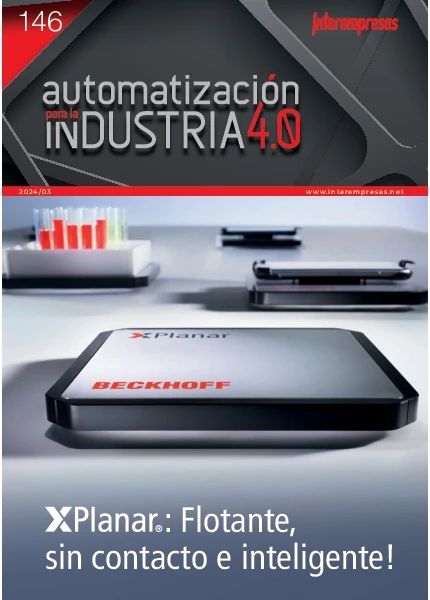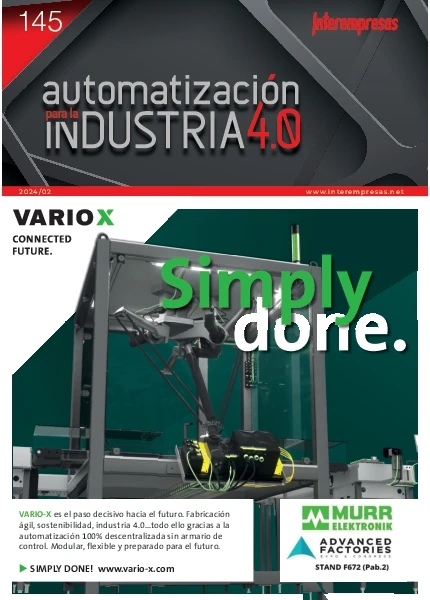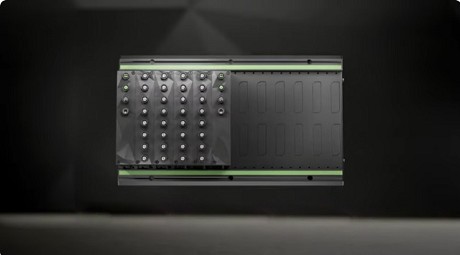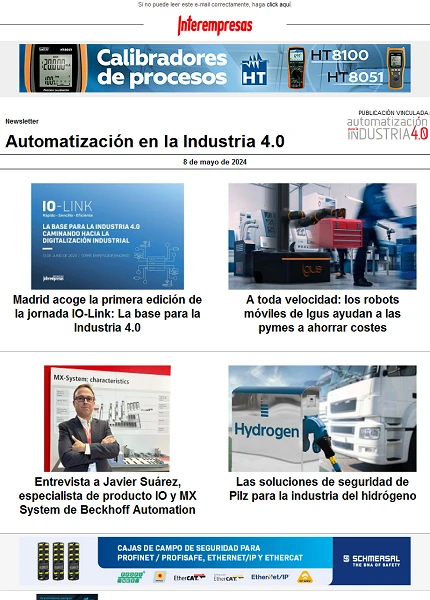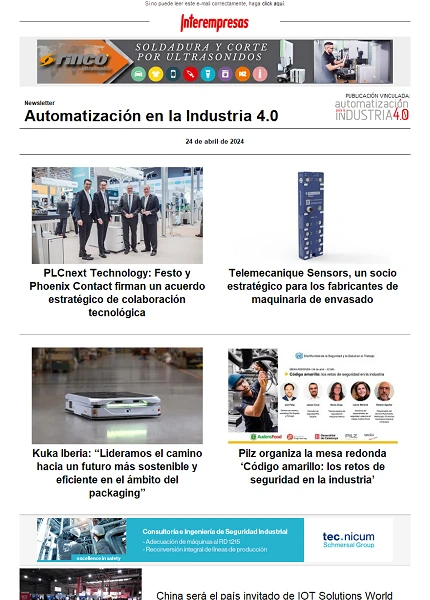Past, present and future of the HMI interface
Interface user, man-machine interface, or more commonly known by its initials in English HMI (Human-Machine Interface), is a set of components, both hardware and software, that allow the operator to communicate and interact with the control of a machine or process. Level domestic and work environments, such as offices, one of the most common control systems that we have is the PC or laptop, and we have plenty of known by all user interface componentssuch as monitors, keyboards, mice, speakers, microphones, etc., most applications of visualization and multimedia that make us friendly our relationship with the device.
In the industrial environment the number of devices of interface and its diversity greatly increases to accommodate different needs, and appear pulsanterías, electronic flyers and graphics, alphanumeric terminals, commands, etc. The main requirements of the industrial interfaces have always been, and should remain so, both the operation and robustness and stability of behaviour. The environmental conditions that can be immersed an industrial HMI system not always are ideal, and we will find ourselves with situations not desired, but inevitable, such as extreme temperatures, pollution or moisture, which must be prepared to the interface.
On the other hand, the graphic applications take precedence robustness of behavior with the beauty of his aesthetic, clearly is more important in a machine or process that works to make it visually beautiful.
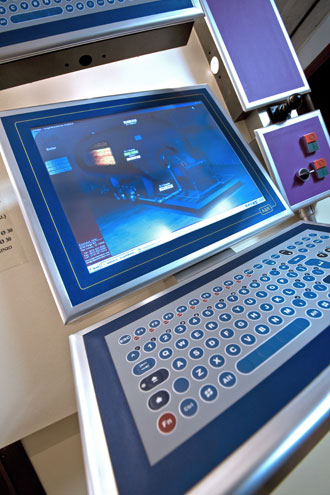
Today we can say that industrial quality requirements are sufficiently achieved by the majority of the HMI devices designed and manufactured for the environment that we are talking about. Then where we are with the other factor we will drive to decide us for a set of HMI or other interfaces: appearance, aesthetics, we have to go for the eyes. And it is possible in this last section where probably has more evolved the concept of new HMI devices.
New formats and display technologies
There in the field of visualization, is a clear trend towards the displays increasingly larger, increase in resolution and more colors. Behind the alphanumeric viewers and screens have been monochrome. From the moment in which the controls are becoming more graphic capabilities, this is reflected in a greater importance to the concept image in our machines and process controls. It is the domestic market that determines in an important part of which will be the future of industrial display, and new concepts of more consumer viewing already see its entry in the industrial sector. One of the points in which more progress in recent times is that of sizes and formats of the display, as well as its image quality and the technology used.
We begin to see the panoramic image 16: 9 formats, in industry, 15: 9, with square and more classic 4: 3 and 16: 10. This trend observed it mostly in small sizes as 7 "which is clearly outstripping the 5.7-inch display. Nor do they surprised us today great visualizations hanging machine, where previously had a huge box for example of CNC there now appears a very top screen display, but narrow background surface and is more elegant and stylish. As well as a display of more than 15 ", not long ago was virtually unthinkable now schemes of 17", 19 ", 21", or even 24 "image, show us the graphical applications of our machines and processes.
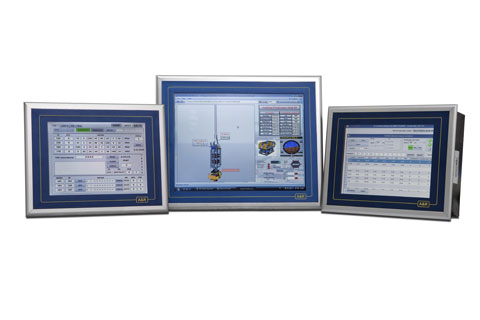
CRT technology makes time which was displaced by flat liquid crystal (LCD) screens. The pixel concept began to gain strength. Today LCD-TFT get even better benefits in some weak points of the LCD, as the angle of view or undesirable "burnt effect" screen caused by the display of very prolonged static image over time. Resolutions of pixels are doubled for the same area, and it is increasingly difficult to find a display of 10,4 "with resolution 640 x 480 to 800 x 600. Due to the increase in the surface of display and image resolution, to the standard _GA has run the initial letters, and we went from the CGA, VGA and XGA to the WXGA, SXGA, SXGA and SXGA +. Although the quality of color in an application is highly dependent on the graphical power of CPU, is most commonly found our visualizations in a depth of 8-bit color. The backlit by LED technology already is in the industrial field, constituting electronic more compact and durable to eliminate fluorescent lamps and the consequential inverters and their wiring, as well as improving substantially in brightness and contrast.
Tactile interfaces, dual touch and multi-touch
The scope of the interaction of the operator mode is one of the few cases in which the industrial sector appeared to lead the way to the consumer market. Touch screens started in machinery well before that in our homes, in part to the failure in many industrial environments of the use of very expanded keyboards and mice. Anyway we have been, until now, the rejection of many people and companies to the tactile technology because of its unjustified reputation for fragile product and inappropriate to the conditions of work of enterprises, by the rudeness and aggressiveness of environment.
Tactile crystals in their different technologies such as resistive, capacitive and SAW (acoustic waves), are a robust and durable component from the sensitive mice or standard keyboards. Of course it must take certain precautions as aggressive chemicals or scratch, but this is also applicable to other devices. If this is case, the only drawback of tactile interfaces is the major complication of their replacement keyboards and mice. On the other hand touch screens allow an excellent graphical interaction with other options much more intuitive interface. The cabinets are much more compact by eliminating complicated plaques of push-buttons and holes for keyboards.
In the present domestic devices such as PDAs, mobile phones, E-books and even PCs have touch interaction of the person with the screen. This has opened the way for new developments of technologies that will be promptly reflected in the industrial sector.
One of the most showy is the interaction doble-táctil or even multi-touch, against the usual down simple until now conventional screens. While initially the multi-touch interfaces were developed with technology infrared, which greatly limited the scope of these devices, currently the major manufacturers of tactile technology developed and they test multi-touch capacitive touch crystals. Even what was unthinkable until recently, such as tactile doble-táctil resistive, begins to see the light. Anyway, it is not enough to have a doble-táctil or multi-touch screen, but that functionality should be supported and used by the software tools to develop graphical applications. In this respect there are great advances in the market and secure that there is great potential for future developments.
New concepts of pulsantería
Even and when touch screens minimized the use of interfaces external of interaction of the operator with the application, it is quite common to find us with a few minimal requirements of tables of pushbuttons, selectors and light signals.
A very normal configuration on the interface for a machine could be that of the display with touch screen along with a push button emergency and, for example, a few pushbuttons of March and unemployment. Even the size of some facilities they oblige the implementation of different management in different parts of machine frames. At this point pushbuttons and light pilots from the large facilities have moved from centralized to distributed, minimizing cabling, so it costs and complexity, and improve in compacted and ability of diagnosis and maintenance. The distributed connection of all these interfaces are used to different buses such as the universally extended CAN until the new real-time protocols based on Ethernet, ProfiNET, PowerLink, EtherCat technology...
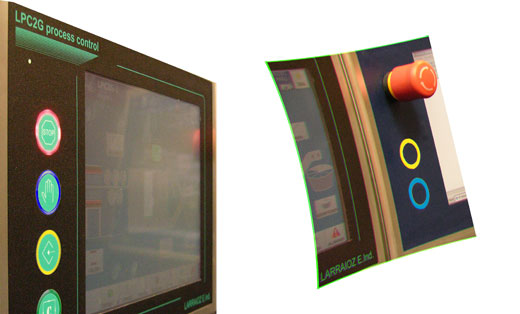
There is a tendency in pulsantería to the replacement of the purely mechanical pressed by electronic technology. In this respect great houses of the electronics industry have long working on it and at the moment the technology of capacitive pulsantería has prospered greatly, for example, against the classic keyboards of membrane, beginning to proliferate in panels and boxes of machine. In addition to its robust and compact concept, the capacitive pulsantería on printed circuit board opens the door to a world of possibilities of using small leds light indication.
SCADAS and other visualization software
If you clear the evolution of the HMI systems in terms of hardware is concerned, different software tools have not been back. The development of increasingly powerful CPUS, both processor and memory, and the advent of 64-bit as MS WindowsTM 7 operating systems or new versions of Linux, have allowed the developers of software tools surpass doors until recently closed to ordinary applications.
Scada systems allow the development of complex graphical applications at a very reasonable time, due to its extensive cast of graphics controls and data management tools and libraries. The incorporation of the 64-bit CPU allows graphs in three dimensions elegant and flexible to use. Already today we have become purely functional and schematic charts new three-dimensional representations, virtually browsing our machine or plant processes to interact with it.
The new generation of multitouch screens have changed the way in which software tools manage navigation. Now, if we want to extend a display area for a part of machine States, already not looking for a magnifying glass icon or select an area of screen, but that we interact with the image through two fingers that we bring or separate to shrink or increase a surface. We have everything a new navigation sign language, and with our hands act directly on the image to increase it, move or rotate in space as we are interested in it.
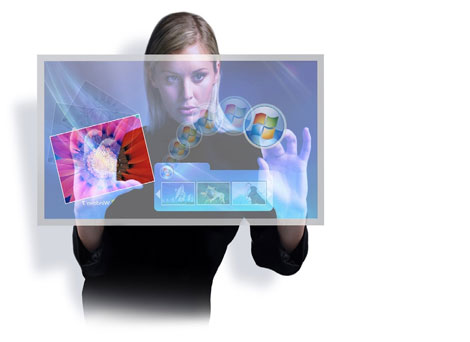
New trends in HMI
The Department of innovation of Larraioz works in the design and development of new platforms of man-machine interface. In addition to the robustness and stability required in the industrial sector, premium aesthetics and finishing of their products.
Visualization of industrial computers of the MyComputer range lines pass from a 7 "Compact with backlight LED to large size of 24". With its two formats, panelable PC or external PC, covers the needs of control and viewing from the vast majority of the applications of machine and process control. The different materials used in frames and boxes, such as aluminium, stainless steel or other higienizables, as well as various types of finish, guarantee frontal or full sealing to IP67, thus fulfilling the requirements demanded by sectors such as food, chemistry and pharmacy.
LEIKB, hot-pluggable industrial computer MyComputer modular interfaces, allow configurations flexible capacitive pulsantería luminous really robust eliminating cabling work. With its different formats of up four capacitive buttons per module, you can easily define a configuration customized for each case. Each of their pushers of capacitive technology has a bright ring, and the different types of functionality implemented allow the various luminous modes of finger rings. Through commands sent to the LEIKB, lighting of each one of the pushbuttons can, among others, turned on or turned off, blinking at different frequencies, turn in different directions more or less rapid, and even change color depending on the used module.
Glass touch resistive and capacitive, from simple touch to multi-touch, cover the demands of interaction with graphical applications of the different formats of screens. Larraioz has just introduced a new model of industrial computer with 22-inch touchscreen. This team of new properties on the market offers the possibility of multi-touch technology adapted for industrial use. With dimensions of 496 mm x 330 mm, offers a screen resolution of native 1.440 x 900 pixels, and 16.2 million colors. Thanks to the transparency of the glass touch, gets a luminosity of 256 Cd/m2 and a contrast of 1000:1, features suitable for viewing in environments of high luminosity. In addition to this, viewing angles are greater than 80%, allowing a display of quality even from difficult positions. Multi-touch glass laminated manufacturing and great length, bases its operation on the "capacitive projection" technology (patented) allows a transmission of the image around 90%. Thanks to its innovative multi-touch technology, you are able to recognize up to 10 simultaneous pressed. Drivers for MS Windows 7 implemented commands 'gesture' from interaction of all the fingers of the hands with the graphical application.
SCADA Genesis32, Genesis64 and BisViz environments allow to design spectacular graphical applications with an optimal time of development. Tools such as GraphWorX, TrendWorX, AlarmWorX, WebHMI or MMX, completely modular, give rise to graphical applications as diverse as the of a simple machine, plants of process, or control the management of public works such as airports, motorways, railway lines,... The new Genesis64 on MS Windows 7 64 bit supports impressive 3D animations, as well as touch dual interaction with the application, which allows zooms, displacement, rotation... All of this meeting the standards of communication OPC UA, and accepting connections as complex as bridging or tunneling of data.
All this, combined with effectiveness, just being a complete and optimum tool for visualization and data management that meets the most demanding of any application requirements, from the most simple and simple to the more complex a modern and visual HMI interface which represents the ideal counterpoint to our machine or process.


